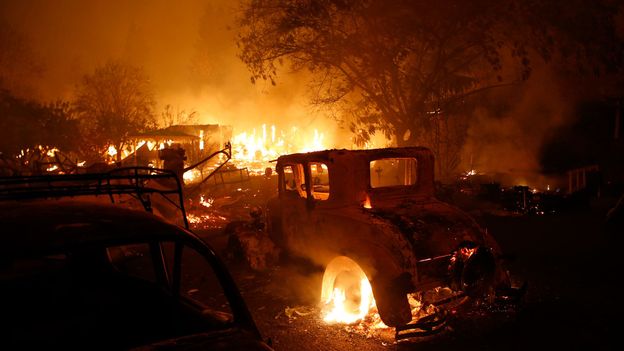Introtopic: Natural disasters
When nature unleashes its fury, it can be devastating. Earthquakes, tsunamis, flooding and wildfires can all cause immense damage and loss of life in a short space of time. But what if we could predict when and where these natural disasters might strike? Could we save lives by being better prepared?
In this blog post, we’ll explore how artificial intelligence (AI) is being used to help us better prepare for natural disasters. We’ll look at how AI is being used to map forests and predict wildfires, to identify areas at risk of flooding, and to help rescue workers locate survivors after earthquakes and tsunamis.
Wildfires are a major threat in many parts of the world. The 2018 California wildfires, for example, burned an area of 1,893,913 acres and claimed 86 lives in Paradise, California. But AI could help us to predict where and when these fires might strike.
SilviaTerra, a San Francisco-based company, is using AI to map forests, providing resources to help planners reduce the risk of fires. They combine on-the-ground measurements with satellite data, aerial photographs, and laser scanning techniques to measure the spread of vegetation. With this data, they can create maps that show areas of higher and lower wildfire risk. These maps can then be used to identify areas where authorities should intervene in advance by putting in physical fire barriers or cutting trees down.
Flooding is another major natural disaster that can be hard to predict. Most flood prediction models attempt to capture all the influences that lead to flooding, such as heavy rainfall, land use, drainage, and the capacity of existing water courses. But these models often give a fairly crude picture. Michael Souffront at Utah’s Brigham Young University is working to improve the Global Flood Awareness System by using AI to introduce smaller rivers and tributaries into the models. With this more detailed picture, local governments can better prepare for floods.
Finally, AI is being used to help rescue workers locate survivors after earthquakes and tsunamis. In 2011, an earthquake off the coast of Japan triggered a tsunami that devastated the Tohoku region and claimed nearly 20,000 lives. A team at Tohoku University is using AI to help rescue workers identify the areas that most need help following a natural disaster, increasing the chances of finding people and pulling them alive from the chaos.
These are just a few examples of how AI is being used to help us prepare for natural disasters. By understanding the risks, we can be better prepared to respond and save lives.
Source: www.bbc.com
